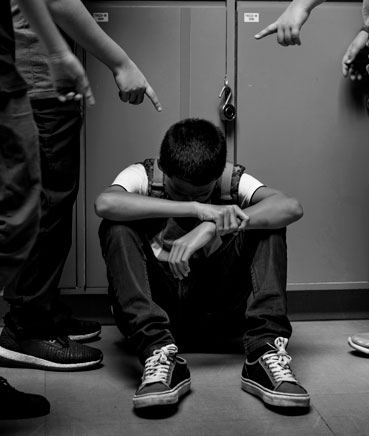A mother's story describes the journey of her son, a victim of school bullying. Through therapeutic follow-up with an effective strategic approach, Pierre will manage to regain self-confidence and the tools to awaken his ability to change his reality and feel stronger.
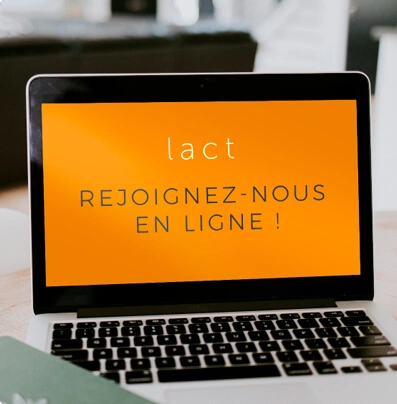

ONLINE OPEN HOUSE
ONLINE OPEN HOUSE
November 12, 2024
from 6:30 p.m. to 8:30 p.m.
MEET US
Come and discover our training courses in strategic systemic approach, hypnosis and systemic coaching. You will meet the trainers and be able to talk with them!
An in-depth look at school bullying
School bullying remains a major challenge in the educational context, causing growing concern within society. Faced with this phenomenon, various intervention approaches have been considered, among which brief systemic and strategic therapy , in particular through the treatment model developed by Emmanuelle Piquet in 2017. Let us observe the effectiveness of strategic therapy in the support for children who are victims of school bullying and explore the influence of parental posture on the therapeutic process.
The problem revolves around two fundamental questions: how can strategic therapy contribute to helping bullied children get out of this delicate situation, and to what extent does parental posture impact the treatment of school bullying?
To answer these questions, the theoretical-clinical hypothesis postulates that the use of systemic therapy tools facilitates the change of perception in the bullied child, while the operational hypothesis explores the role of parental posture in this process. .
Support and methodology
The methodology adopted is based on immersion within a strategic therapy center, where the intervention rigorously follows the model of the Palo Alto school . Particular attention is paid to the unique “collective brain” system, where several therapists observe and intervene during sessions.
The treatment of child victims of harassment underlines the importance of first equipping the parents before initiating direct intervention with the child. The reasons for this approach, explained by the center's practitioners, aim to preserve the authenticity of parental emotions, to avoid an overload of specialists for the child and to prevent "Super Nanny syndrome" where changes do not persist afterward. the intervention.
We are in the world of strategic therapy, exploring its concrete application in the treatment of school bullying and highlighting the decisive role of parental posture in the therapeutic process.
Beyond hardship, hope and resilience
Pierre's difficulties
Pierre, a 12-year-old boy, was brought in for consultation due to relationship problems at school. He was regularly bullied by his peers, which had a negative impact on his emotional well-being. Throughout the sessions, Pierre expressed his feelings of loneliness and fear in the face of aggression from other children. Thanks to adapted therapeutic support , Pierre was able to express his emotions and develop strategies to deal with harassment. He also learned to identify his own inner resources to strengthen his self-confidence. Over time, Pierre showed signs of improvement in his self-esteem and his ability to manage conflict situations at school.
Family background
Christine, a teacher and mother of three boys, shares her concerns during the first consultation. She emphasizes that Pierre, a young 12-year-old teenager, has always been isolated from others, despite medical follow-ups since kindergarten. Pierre, diagnosed with dyspraxia, benefits from various educational supports, but Christine reveals that he encounters significant problems in his relationships with his peers. Worried about her son, she talks about the abuse she suffered at the hands of her friends Léo and Estéban. Faced with this worrying situation, Pierre's follow-up begins with the objective of understanding his reality and providing appropriate solutions.
Communication and socialization problems
Pierre presents communication disorders and atypical behavior. Recent test results indicate uncertainty about possible Autism Spectrum Disorder (ASD) or Attention Deficit Hyperactivity Disorder (ADD) . Despite participating in social skills therapy, relationship problems persist.
Past and current experience
History reveals that Pierre was already confronted with harassment in CM2, but the situation was resolved quickly. In 6th grade, he experienced a period of happiness by bonding with three classmates, but this friendship broke up in 5th grade, deeply affecting Pierre. Through discussions, the issues are identified and strategies developed to help them overcome this ordeal.
Peter's perspective
Pierre reveals the details of his daily experience with two friends, Estéban and Léo, who regularly bother him. Pierre avoids all contact with them and prefers to stay alone. He describes specific scenes, notably in sports and technology classes, where he is the target of mockery and criticism. Currently, he expresses his difficulties and his discomfort in the face of his attackers and the desire for a class without friends, revealing inner suffering.
Identification of suffering
A well-being scale reveals that this situation with Estéban and Léo deeply affects Pierre, marking a high level of suffering. The therapists offer a metaphor to illustrate the power dynamic, emphasizing the importance of changing Pierre's avoidant posture.

Development of psychological weapons
Aware of the need to provide Pierre with tools to deal with his harassers, the therapists together develop verbal "arrows", symbolizing Pierre's capacity. In the specific context of therapy and management of harassment, “arrows” as described by Piquet (2018) are strategies directed towards the leaders of the group of harassers. These strategies are designed to specifically respond to the attacks most often launched by harassers, using the same words or phrases used by the harassers themselves.
Transformation and autonomy
By using these verbal "arrows," bullied children can hope to effectively counter bullies' attacks by confronting them with their own words, which can help dismantle bullying dynamics and promote a more healthy and respectful environment.
The therapeutic team offers Pierre tasks aimed at modifying his response to harassment. The goal is to help him confront rather than avoid, thereby strengthening his resilience in the face of verbal attacks. The different verbal “arrows” proposed aim to give Pierre a variety of possible answers, to defend himself mentally, helping him to choose the one that suits him best. He is encouraged to train and integrate these new resources into his daily life.
Subsequent monitoring will aim to evaluate the impact of these interventions on Pierre's well-being and to adjust the strategies according to his evolution.
Pierre’s responsibility
Pierre, in preparation for this new reality, had trained at home with his mother, using the symbolic tools that the therapist had developed with him. However, despite this preparation, he ultimately did not need to practice these defense techniques.
The therapist guided Pierre toward understanding that change comes from his actions, inviting him to recognize his own power over the situation. This empowerment served to strengthen confidence in his abilities to overcome challenges.
Pierre is no longer bothered
Surprisingly, during the third consultation, Pierre announced that his harassers no longer bothered him. He recounts peaceful weeks, attributing this change to different activities of his attackers. Both boys were busy elsewhere, focused on their current project during technology class. The playground had become a space where everyone stayed in their own corner. For the first time in a long time, Pierre felt good at school. The metaphor of the warrior emerges, highlighting the psychological transformation of Pierre who now feels ready to face his fears. Social dynamics have changed, and Pierre describes how this transformation took place.
Pierre, with an air of relief, announces that Léo and Estéban have not harassed over the last two weeks.
During the sessions, light is shed on Pierre's active role in his positive change. His different posture and preparation helped deter his harassers. The notion of responsibility for the success of this process is crucial to strengthening Pierre's self-confidence.
Envision the future
To reinforce positive changes, therapists discuss with Pierre his current well-being on a scale of 0 to 10. Pierre expresses a high level of satisfaction, noting his improvement. The discussion aims to consolidate the progress made and to prepare Pierre for possible similar situations. It is essential that he understands how to maintain this new posture. The metaphorical use of "arrows" as a superpower gives him a positive image of his abilities and reinforces his emotional autonomy. In order to consolidate progress, the therapists discuss possible relapses with Pierre.
Positive feedback
The session ends with encouragement. The therapists remind Pierre that they are there to support him when needed, thereby reinforcing his sense of autonomy and control over his own life.
Ultimately, Pierre's case illustrates not only his ability to overcome harassment, but also how internal change can positively influence his relationships and overall well-being.
Pierre's mother, surprised by the speed of the transformation, confirms that her son no longer suffers harassment. This external validation reinforces Pierre’s positive perception of his efforts.
The power of strategic intervention
Pierre's case highlights the complex dynamics of bullying and the capacity of adolescents to transform their reality. The combination of a targeted therapeutic approach, individual empowerment and effective consolidation of changes can lead to rapid and positive results. It is important to involve loved ones, such as family, in the therapeutic process to enhance long-term benefits.
The sessions highlight the positive impact of Pierre's mental and emotional preparation, symbolized by the "arrows" that he developed with the help of his therapists. The warrior metaphor highlights Peter's transformation into a more confident and resilient individual, ready to face challenges rather than avoid them. This development reflects the power of empowerment and self-efficacy, key concepts in understanding positive change in children.
Peter's apparent detachment during the session suggests emotional improvement, reinforced by his assertion that he no longer needs help with other problems. The reassessment of his well-being on a scale of 0 to 10 highlights a marked improvement, emphasizing the role of the child in his own healing process. Exploring the possibility of relapse strengthens Pierre's understanding of behaviors to avoid to maintain his well-being.
Finally, Pierre's mother confirms the tangible reality of the change. The speed of transformation may be surprising, but it highlights the effectiveness of approaches focused on action and emotional experience. Children's ability to adapt and find resources within themselves when guided appropriately is emphasized. Thus, Pierre's case illustrates the potential of targeted interventions to strengthen children's resilience in the face of social and emotional challenges.
Where to train in the systemic and strategic approach?
LACT offers several live certified web training courses with 50 international trainers.
To find out the prices, select the training that interests you
MAPPING OF ALL LACT TRAINING COURSES
AND STRATEGIC APPROACH
Prerequisites
_
general
Bachelor's degree
with or without
clinical experience
clinical
Bac +3
with
clinical experience
Bac +5
with
clinical practice
education
Bachelor's degree
with or without
teaching experience
Bac +3
with
teaching experience
BUSINESS
Bachelor's degree
with or without
coaching experience
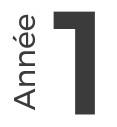
LACT
CERTIFICATE -
FOUNDATIONS LEVEL
UNIVERSITY
DIPLOMA -
RELATIONSHIP
CLINIC AND
STRATEGIC
INTERVENTION -
with
Paris 8 University
DIPLOMA
-
MASTER
®
IN
STRATEGIC SYSTEMIC
LACT
CERTIFICATE –
EDUCATION
FUNDAMENTALS LEVEL
UNIVERSITY
DIPLOMA -
STRATEGIC
SYSTEMS APPROACH TO
EDUCATION
-
with
Paris 8 University
LACT
CERTIFICATE -
SYTEMIC
COACHING
FUNDAMENTALS LEVEL
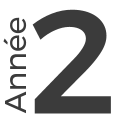
LACT CERTIFICATE - PRACTICAL LEVEL
COACH
DIPLOMA ®
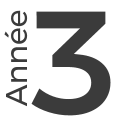
SYSTEMICIAN ® - RELATIONSHIP CLINICIAN ® DIPLOMA - ADVANCED LEVEL
CLINICAL MASTER®![]()
DIPLOMA MASTER HYPNOSIS
AND STRATEGIC APPROACH

general
Bachelor's degree
with or without
clinical experience
clinical
Bac +3
with
clinical experience
Bac +5
with
clinical practice
LACT
CERTIFICATE -
FOUNDATIONS LEVEL
UNIVERSITY DIPLOMA
RELATIONSHIP
CLINIC AND
STRATEGIC INTERVENTION
with Paris 8 University
MASTERS
®
DIPLOMA IN
STRATEGIC SYSTEMIC
BUSINESS
Bachelor's degree
with or without
coaching experience
education
Bachelor's degree
with or without
teaching experience
Bac +3
with
teaching experience
LACT
CERTIFICATE -
SYTEMIC
COACHING
FUNDAMENTALS LEVEL
LACT
CERTIFICATE –
EDUCATION
FUNDAMENTALS LEVEL
UNIVERSITY
DIPLOMA –
STRATEGIC
SYSTEMS APPROACH TO
EDUCATION
with Paris 8 University

PRACTICAL LEVEL CERTIFICATE
DIPLOMA
®

SYSTEMICIAN ® - RELATIONSHIP CLINICIAN ® DIPLOMA - ADVANCED LEVEL

CLINICAL MASTER®![]()
DIPLOMA MASTER HYPNOSIS
Resources and training on systemic management of harassment
- University of Paris 8 - Research on the systemic approach in the management of harassment at work. [Paris8 University]( https://www.univ-paris8.fr/agence-systemique-harcelement-travail )
- Systemic Training and Intervention Center (CEFS) - Training in systemic management of school bullying. [CEFS]( https://www.cefs.be/formation-harcelement-scolaire )
- French Institute for Training in Systemic Family Therapy (IFFTI) - Training program on family harassment and the systemic approach. [IFFTI]( https://www.iffti.fr/harcelement-familial )
- Palo Alto School - Resources and training on managing harassment with a strategic systemic approach. [School of Palo Alto]( https://www.ecoledepaloalto.fr/harcelement )
- French-speaking Association for Contextual and Systemic Therapy (AFTCS) - Workshops on the systemic management of harassment. [AFTCS]( https://www.aftcs.fr/harcelement )
- University of Lausanne - Studies and resources on the systemic management of bullying in schools. [University of Lausanne]( https://www.unil.ch/systemique-harcelement )
- University of Geneva - Research on systemic interventions in workplace harassment. [University of Geneva]( https://www.unige.ch/systemique-harcelement-travail )
- University of Sherbrooke - Training program on systemic management of harassment. [University of Sherbrooke]( https://www.usherbrooke.ca/harcelement-systemique )
- Thot Cursus - Articles on systemic approaches to managing harassment in educational settings. [Thot Cursus]( https://cursus.edu/articles/harcelement-systemique )
- School of Practicing Psychologists - Training in systemic interventions against academic and professional harassment. [School of Practicing Psychologists] ( https://www.psycho-prat.fr/harcelement-systemique )
- Laval University - Case studies on the systemic management of harassment at work and in schools. [Laval University]( https://www.ulaval.ca/harcelement-systemique )
- Systemic Psychology Resource Center - Resources on the systemic management of harassment. [Systemic Psychology Resource Center] ( https://www.crps-systemique.org/harcelement )
- Université de Moncton - Systemic approach program for harassment management. [University of Moncton]( https://www.umoncton.ca/harcelement-systemique )
